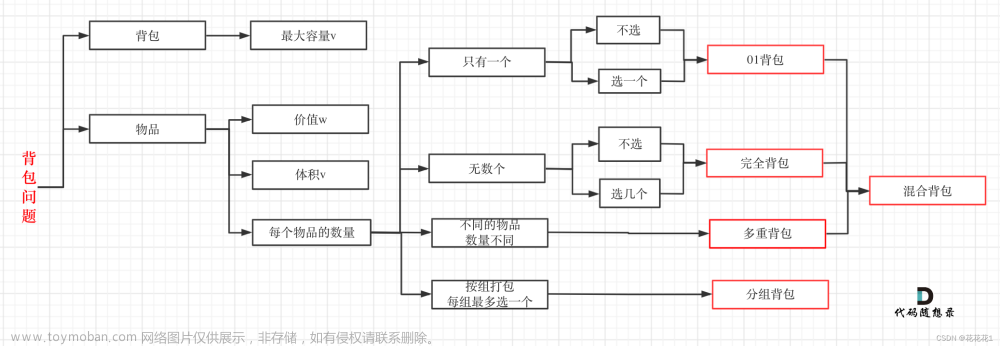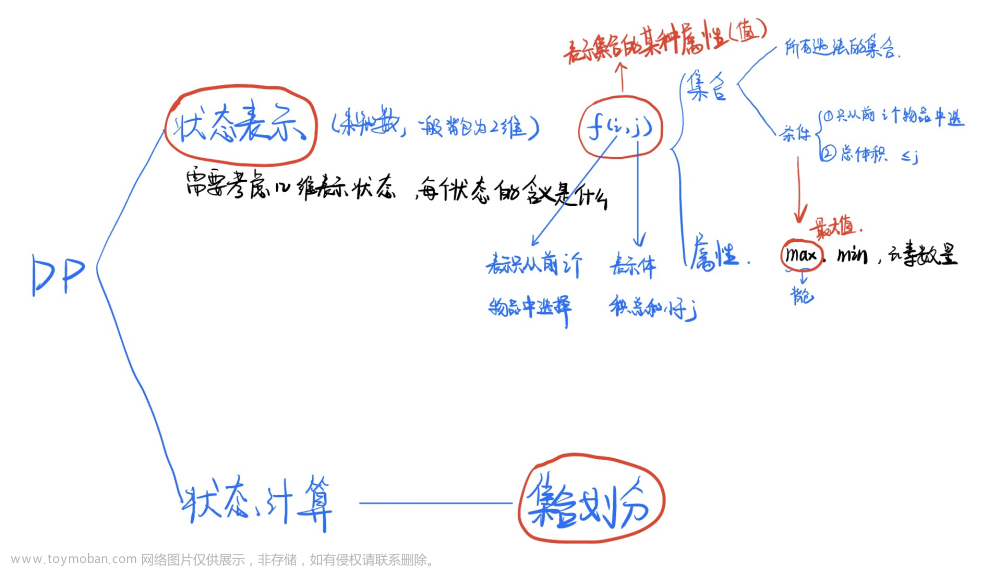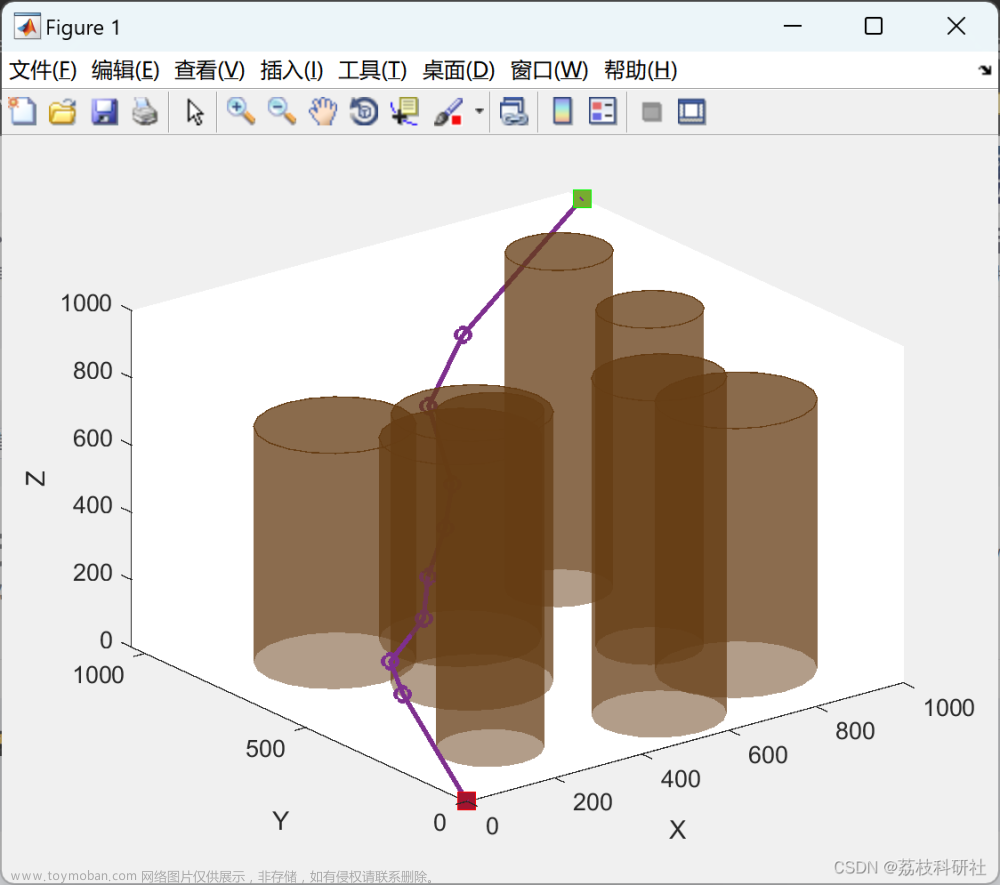背景
半正定规划(Semi-Definite Program, SDP)在MIMO无线通信相关的信号处理中具有广泛的应用,在某些场景可以分析证明SDP的得到的解释原问题的全局最优化或者次优解。因此,对其做一个简要介绍,同时其与LPQP、QCQP、SOCP的关系。
- 符号说明: X ⪰ 0 \mathbf{X} \succeq \mathbf{0} X⪰0代表PSD矩阵, x ⪰ 0 \mathbf{x} \succeq \mathbf{0} x⪰0代表列向量的每个元素均大于等于0。
SDP的两种形式
- 不等式形式:
min c T x s.t. F ( x ) ⪯ 0 \begin{array}{ll}\min & \mathbf{c}^{\mathrm{T}} \mathbf{x} \\ \text { s.t. } & \mathbf{F}(\mathbf{x}) \preceq \mathbf{0}\end{array} min s.t. cTxF(x)⪯0
其中
c
∈
R
n
\mathbf{c} \in \mathbb{R}^n
c∈Rn,求解变量
x
∈
R
n
\mathbf{x} \in \mathbb{R}^n
x∈Rn。约束条件为线性矩阵不等式。即:
F
(
x
)
=
F
0
+
x
1
F
1
+
⋯
+
x
n
F
n
\mathbf{F}(\mathbf{x})=\mathbf{F}_0+x_1 \mathbf{F}_1+\cdots+x_n \mathbf{F}_n
F(x)=F0+x1F1+⋯+xnFn
注:若具有多个LMI约束,可以归结为只有一个LMI约束,其等价于:
DIAG
(
F
1
(
x
)
,
…
,
F
m
(
x
)
)
⪯
0
\operatorname{DIAG}\left(\mathbf{F}_1(\mathbf{x}), \ldots, \mathbf{F}_m(\mathbf{x})\right) \preceq \mathbf{0}
DIAG(F1(x),…,Fm(x))⪯0
- 标准形式:
min Tr ( C X ) s.t. X ⪰ 0 Tr ( A i X ) = b i ∈ R , i = 1 , … , m \begin{array}{cl} \min & \operatorname{Tr}(\mathbf{C X}) \\ \text { s.t. } & \mathbf{X} \succeq \mathbf{0} \\ & \operatorname{Tr}\left(\mathbf{A}_i \mathbf{X}\right)=b_i \in \mathbb{R}, i=1, \ldots, m \end{array} min s.t. Tr(CX)X⪰0Tr(AiX)=bi∈R,i=1,…,m
其中, A i ∈ S n , C ∈ S n \mathbf{A}_i \in \mathbb{S}^n, \mathbf{C} \in \mathbb{S}^n Ai∈Sn,C∈Sn,变量 X ∈ S n \mathbf{X} \in \mathbb{S}^n X∈Sn。
注:不等式形式和标准形式是等价的,后面将证明。
QCQP和SOCP转化为SDP
引入一个重要的定理:Schur补定理。
其定义如下:
假设
A
∈
S
+
+
n
,
C
∈
S
m
\mathbf{A} \in \mathbb{S}_{++}^n, \mathbf{C} \in \mathbb{S}^m
A∈S++n,C∈Sm,则当且仅当
S
A
≜
C
−
B
T
A
−
1
B
⪰
0
\mathbf{S}_{\mathbf{A}} \triangleq \mathbf{C}-\mathbf{B}^{\mathrm{T}} \mathbf{A}^{-1} \mathbf{B} \succeq \mathbf{0}
SA≜C−BTA−1B⪰0成立时有:
S
≜
[
A
B
B
T
C
]
⪰
0
\mathbf{S} \triangleq\left[\begin{array}{cc} \mathbf{A} & \mathbf{B} \\ \mathbf{B}^{\mathrm{T}} & \mathbf{C} \end{array}\right] \succeq \mathbf{0}
S≜[ABTBC]⪰0
反之亦然。
因此,凸二次不等式:
(
A
x
+
b
)
T
(
A
x
+
b
)
−
c
T
x
−
d
⩽
0
,
∀
x
∈
R
n
(\mathbf{A x}+\mathbf{b})^{\mathrm{T}}(\mathbf{A x}+\mathbf{b})-\mathbf{c}^{\mathrm{T}} \mathbf{x}-d \leqslant 0, \forall \mathbf{x} \in \mathbb{R}^n
(Ax+b)T(Ax+b)−cTx−d⩽0,∀x∈Rn成立的充要条件是如下的LMI成立:
[
I
A
x
+
b
(
A
x
+
b
)
T
c
T
x
+
d
]
⪰
0
,
∀
x
∈
R
n
\left[\begin{array}{cc} \mathbf{I} & \mathbf{A x}+\mathbf{b} \\ (\mathbf{A x}+\mathbf{b})^{\mathrm{T}} & \mathbf{c}^{\mathrm{T}} \mathbf{x}+d \end{array}\right] \succeq \mathbf{0}, \forall \mathbf{x} \in \mathbb{R}^n
[I(Ax+b)TAx+bcTx+d]⪰0,∀x∈Rn
-
QCQP问题:
考虑凸QCQP问题:
min x ∈ R n ∥ A 0 x + b 0 ∥ 2 2 − c 0 T x − d 0 s.t. ∥ A i x + b i ∥ 2 2 − c i T x − d i ⩽ 0 , i = 1 , … , m \begin{aligned} \min _{\mathbf{x} \in \mathbb{R}^n} &\left\|\mathbf{A}_0 \mathbf{x}+\mathbf{b}_0\right\|_2^2-\mathbf{c}_0^{\mathrm{T}} \mathbf{x}-d_0 \\ \text { s.t. } &\left\|\mathbf{A}_i \mathbf{x}+\mathbf{b}_i\right\|_2^2-\mathbf{c}_i^{\mathrm{T}} \mathbf{x}-d_i \leqslant 0, i=1, \ldots, m \end{aligned} x∈Rnmin s.t. ∥A0x+b0∥22−c0Tx−d0∥Aix+bi∥22−ciTx−di⩽0,i=1,…,m
其上镜图形式可以表示为:
min x ∈ R n , t ∈ R t s.t. [ I A 0 x + b 0 ( A 0 x + b 0 ) T c 0 T x + d 0 + t ] ⪰ 0 [ I A i x + b i ( A i x + b i ) T c i T x + d i ] ⪰ 0 , i = 1 , … , m \begin{array}{rl} \min _{\mathbf{x} \in \mathbb{R}^n, t \in \mathbb{R}} & t \\ \text { s.t. } & {\left[\begin{array}{cc} \mathbf{I} & \mathbf{A}_0 \mathbf{x}+\mathbf{b}_0 \\ \left(\mathbf{A}_0 \mathbf{x}+\mathbf{b}_0\right)^{\mathrm{T}} & \mathbf{c}_0^{\mathrm{T}} \mathbf{x}+d_0+t \end{array}\right] \succeq \mathbf{0}} \\ & {\left[\begin{array}{cc} \mathbf{I} & \mathbf{A}_i \mathbf{x}+\mathbf{b}_i \\ \left(\mathbf{A}_i \mathbf{x}+\mathbf{b}_i\right)^{\mathrm{T}} & \mathbf{c}_i^{\mathrm{T}} \mathbf{x}+d_i \end{array}\right] \succeq \mathbf{0}, i=1, \ldots, m} \end{array} minx∈Rn,t∈R s.t. t[I(A0x+b0)TA0x+b0c0Tx+d0+t]⪰0[I(Aix+bi)TAix+biciTx+di]⪰0,i=1,…,m
该问题是SDP -
SOCP问题:
同样地,对于二阶锥不等式: ∥ A x + b ∥ 2 ⩽ f T x + d , x ∈ R n \|\mathbf{A} \mathbf{x}+\mathbf{b}\|_2 \leqslant \mathbf{f}^{\mathrm{T}} \mathbf{x}+d, \mathbf{x} \in \mathbb{R}^n ∥Ax+b∥2⩽fTx+d,x∈Rn,其可以表示为 f T x + d − 1 f T x + d ( A x + b ) T ( A x + b ) ⩾ 0 , x ∈ R n \mathbf{f}^{\mathrm{T}} \mathbf{x}+d-\frac{1}{\mathbf{f}^{\mathrm{T}} \mathbf{x}+d}(\mathbf{A} \mathbf{x}+\mathbf{b})^{\mathrm{T}}(\mathbf{A} \mathbf{x}+\mathbf{b}) \geqslant 0, \quad \mathbf{x} \in \mathbb{R}^n fTx+d−fTx+d1(Ax+b)T(Ax+b)⩾0,x∈Rn,根据Schur补,其等价为LMI:
[ ( f T x + d ) I m A x + b ( A x + b ) T f T x + d ] ⪰ 0 , x ∈ R n \left[\begin{array}{cc} \left(\mathbf{f}^{\mathrm{T}} \mathbf{x}+d\right) \mathbf{I}_m & \mathbf{A x}+\mathbf{b} \\ (\mathbf{A x}+\mathbf{b})^{\mathrm{T}} & \mathbf{f}^{\mathrm{T}} \mathbf{x}+d \end{array}\right] \succeq \mathbf{0}, \quad \mathbf{x} \in \mathbb{R}^n [(fTx+d)Im(Ax+b)TAx+bfTx+d]⪰0,x∈Rn
SDP在组合优化中的应用
考虑如下的Boolean二次规划(BQP)问题:
max
x
T
C
x
s.t.
x
i
∈
{
−
1
,
+
1
}
,
i
=
1
,
…
,
n
(即
x
∈
{
−
1
,
+
1
}
n
)
\begin{aligned} \max &\qquad \mathrm{x}^{\mathrm{T}} \mathbf{C x} \\ \text { s.t. } &\quad\left.x_i \in\{-1,+1\}, i=1, \ldots, n \text { (即 } \mathbf{x} \in\{-1,+1\}^n\right) \end{aligned}
max s.t. xTCxxi∈{−1,+1},i=1,…,n (即 x∈{−1,+1}n)
分析:当
C
⪰
0
\mathbf{C} \succeq \mathbf{0}
C⪰0时,该目标函数为凸函数,但约束问题等于非仿射射约束
x
i
2
=
1
,
i
=
1
,
…
,
n
x_i^2=1, i=1, \ldots, n
xi2=1,i=1,…,n,故该问题是非凸的。青桔发求解BQP的复杂度是
2
n
2^n
2n。接下来将以此为例子讨论如何通过半正定松弛(Semi-Definite Relaxation, SDR)求解BQP问题。
首先引入如下辅助变量:
X
=
x
x
T
\mathbf{X}=\mathbf{xx}^{\mathbf{T}}
X=xxT,原BQP问题等价为:
max
x
,
X
Tr
(
C
X
)
s.t.
X
=
x
x
T
[
X
]
i
i
=
1
,
i
=
1
,
…
,
n
\begin{aligned} \max _{\mathbf{x}, \mathbf{X}} & \quad\operatorname{Tr}(\mathbf{C X}) \\ \text { s.t. } &\quad \mathbf{X}=\mathbf{x x}^{\mathrm{T}} \\ & \quad{[\mathbf{X}]_{i i}=1, i=1, \ldots, n } \end{aligned}
x,Xmax s.t. Tr(CX)X=xxT[X]ii=1,i=1,…,n
分析
X
=
x
x
T
\mathbf{X}=\mathbf{xx}^{\mathbf{T}}
X=xxT(
X
\mathbf{X}
X是秩-1的PSD矩阵),等价于
X
=
x
x
T
⟺
X
⪰
0
且
rank
(
X
)
=
1
\mathbf{X}=\mathrm{xx}^{\mathrm{T}} \Longleftrightarrow \mathbf{X} \succeq \mathbf{0} \text { 且 } \operatorname{rank}(\mathbf{X})=1
X=xxT⟺X⪰0 且 rank(X)=1
如果去掉秩-1约束,放松为
X
⪰
0
\mathrm{X} \succeq 0
X⪰0(这种去掉秩-1约束的松弛方法称为:SDR),可以得到如下的SDP问题:
max
Tr
(
C
X
)
s.t.
X
⪰
0
[
X
]
i
i
=
1
,
i
=
1
,
…
,
n
\begin{aligned} \max & \quad\operatorname{Tr}(\mathbf{C X}) \\ \text { s.t. } & \quad\mathbf{X} \succeq \mathbf{0} \\ &\quad {[\mathbf{X}]_{i i}=1, i=1, \ldots, n } \end{aligned}
max s.t. Tr(CX)X⪰0[X]ii=1,i=1,…,n
该SDP问题成为前者优化问题的BQP。前者的约束集包含后者的约束集合,即SDP问题是原问题的一个下界。
如果SDP问题得以解决,其秩恰好为1,通过特征值分解: X ⋆ = x ⋆ x ⋆ T \mathbf{X}^{\star}=\mathbf{x}^{\star} \mathbf{x}^{\star T} X⋆=x⋆x⋆T可以得到原问题最优解,若秩不为1,则可以通过两种方法得到原问题的近似解:
- 秩-1近似:选 X \mathbf{X} X的主特征向量 x ^ \widehat{\mathbf{x}} x ,再利用 [ x ^ ] i = sgn ( [ x ~ ] i ) [\widehat{\mathbf{x}}]_i=\operatorname{sgn}\left([\tilde{\mathbf{x}}]_i\right) [x ]i=sgn([x~]i)得到近似解
- 高斯随机化:产生 L L L个服从均值为 0 \mathbf{0} 0,协方差矩阵为 X ∗ \mathbf{X}^* X∗的高斯随机向量 { ξ ( ℓ ) , ℓ = 1 , … , L } \left\{\boldsymbol{\xi}^{(\ell)}, \ell=1, \ldots, L\right\} {ξ(ℓ),ℓ=1,…,L},再将其量化进行如下量化: [ x ^ ( ℓ ) ] i = sgn ( [ ξ ( ℓ ) ] i ) , ∀ i \left[\widehat{\mathbf{x}}^{(\ell)}\right]_i=\operatorname{sgn}\left(\left[\boldsymbol{\xi}^{(\ell)}\right]_i\right), \quad \forall i [x (ℓ)]i=sgn([ξ(ℓ)]i),∀i,最后得到 x ^ = x ^ ( ℓ ∗ ) \widehat{\mathbf{x}}=\widehat{\mathbf{x}}^{\left(\ell^*\right)} x =x (ℓ∗),其中: ℓ ⋆ = arg max ℓ = 1 , … , L ( x ^ ( ℓ ) ) T C x ^ ( ℓ ) \ell^{\star}=\arg \max _{\ell=1, \ldots, L}\left(\widehat{\mathbf{x}}^{(\ell)}\right)^{\mathrm{T}} \mathbf{C} \widehat{\mathbf{x}}^{(\ell)} ℓ⋆=argmaxℓ=1,…,L(x (ℓ))TCx (ℓ)
注:在很多时候,高斯随机化方法得到的近似解优于秩1近似解。
SDR的一些例子
下行发送功率最小化
考虑如下下行广播信道的波束成形问题:
y
i
=
h
i
T
f
s
+
v
i
,
i
=
1
,
…
,
n
y_i=\mathbf{h}_i^{\mathrm{T}} \mathbf{f} s+v_i, i=1, \ldots, n
yi=hiTfs+vi,i=1,…,n
承载信号
s
∈
C
s \in \mathbb{C}
s∈C满足:
E
{
∣
s
∣
2
}
=
1
\mathbb{E}\left\{|s|^2\right\}=1
E{∣s∣2}=1
该问题对发射功率最小化,并保证每个接收端的SNR不小于阈值
γ
0
\gamma_0
γ0,即:
γ
i
=
∣
h
i
T
f
∣
2
σ
i
2
⩾
γ
0
,
i
=
1
,
…
,
n
\gamma_i=\frac{\left|\mathbf{h}_i^{\mathrm{T}} \mathbf{f}\right|^2}{\sigma_i^2} \geqslant \gamma_0, i=1, \ldots, n
γi=σi2∣∣hiTf∣∣2⩾γ0,i=1,…,n
有:
∣
h
i
T
f
∣
2
=
(
h
i
T
f
)
f
H
h
i
∗
=
Tr
(
f
f
H
h
i
∗
h
i
T
)
\left|\mathbf{h}_i^{\mathrm{T}} \mathbf{f}\right|^2=\left(\mathbf{h}_i^{\mathrm{T}} \mathbf{f}\right) \mathbf{f}^{\mathrm{H}} \mathbf{h}_i^*=\operatorname{Tr}\left(\mathbf{f f}^{\mathrm{H}} \mathbf{h}_i^* \mathbf{h}_i^{\mathrm{T}}\right)
∣∣hiTf∣∣2=(hiTf)fHhi∗=Tr(ffHhi∗hiT),令
Q
i
=
h
i
∗
h
i
T
/
(
γ
0
σ
i
2
)
\mathbf{Q}_i=\mathbf{h}_i^* \mathbf{h}_i^{\mathrm{T}} /\left(\gamma_0 \sigma_i^2\right)
Qi=hi∗hiT/(γ0σi2),有优化问题如下:
min
∥
f
∥
2
2
s.t.
Tr
(
f
f
H
Q
i
)
⩾
1
,
i
=
1
,
…
,
n
\begin{aligned} \min &\quad\|\mathbf{f}\|_2^2 \\ \text { s.t. } & \quad\operatorname{Tr}\left(\mathbf{f} \mathbf{f}^{\mathrm{H}} \mathbf{Q}_i\right) \geqslant 1, i=1, \ldots, n \end{aligned}
min s.t. ∥f∥22Tr(ffHQi)⩾1,i=1,…,n
该问题非凸,并且是NP-hard的。原问题等价为:
min
f
∈
C
m
,
F
∈
H
m
Tr
(
F
)
s.t.
F
=
f
f
H
,
Tr
(
F
Q
i
)
⩾
1
,
i
=
1
,
…
,
n
\begin{aligned} \min _{\mathbf{f} \in \mathbb{C}^m, \mathbf{F} \in \mathbb{H}^m} & \quad\operatorname{Tr}(\mathbf{F}) \\ \text { s.t. } & \quad\mathbf{F}=\mathbf{f f}^{\mathrm{H}}, \operatorname{Tr}\left(\mathbf{F} \mathbf{Q}_i\right) \geqslant 1, i=1, \ldots, n \end{aligned}
f∈Cm,F∈Hmmin s.t. Tr(F)F=ffH,Tr(FQi)⩾1,i=1,…,n
利用SDR近似,有:
min
Tr
(
F
)
s.t.
F
⪰
0
,
Tr
(
F
Q
i
)
⩾
1
,
i
=
1
,
…
,
n
\begin{array}{ll} \min & \operatorname{Tr}(\mathbf{F}) \\ \text { s.t. } & \mathbf{F} \succeq \mathbf{0}, \operatorname{Tr}\left(\mathbf{F} \mathbf{Q}_i\right) \geqslant 1, i=1, \ldots, n \end{array}
min s.t. Tr(F)F⪰0,Tr(FQi)⩾1,i=1,…,n文章来源:https://www.toymoban.com/news/detail-796225.html
在RIS 、HBF中也有诸多应用,但是基本的原理万变不离其宗,太多例子,不再赘述。文章来源地址https://www.toymoban.com/news/detail-796225.html
到了这里,关于优化问题-半正定规划(Semi-Definite Program, SDP)的文章就介绍完了。如果您还想了解更多内容,请在右上角搜索TOY模板网以前的文章或继续浏览下面的相关文章,希望大家以后多多支持TOY模板网!













